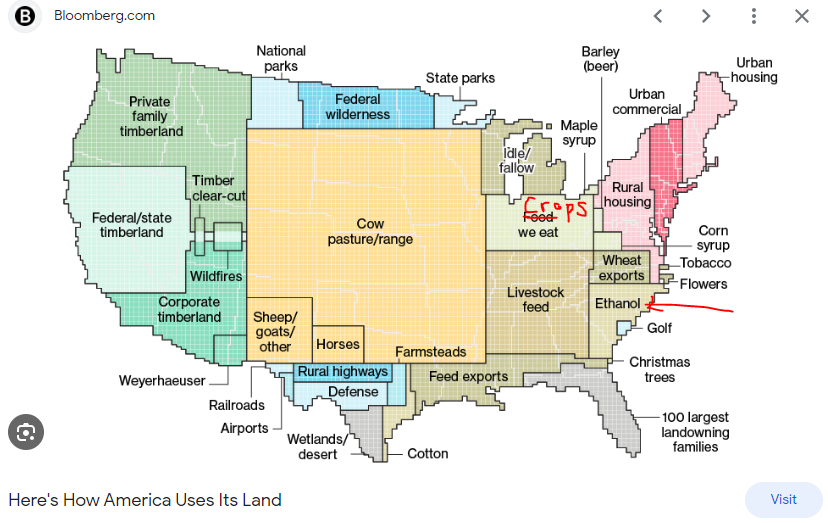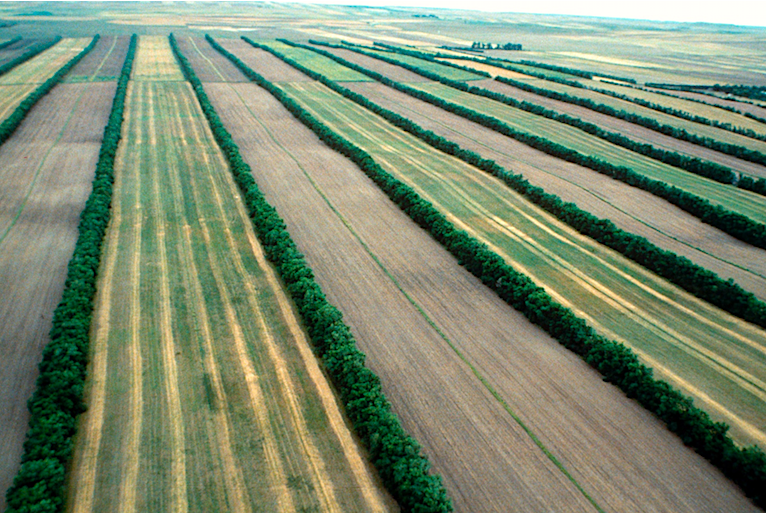"The US will need solar panels on 10.3M acres...to meet the goal of decarbonizing the economy by 2050."
That's less land than we use for ethanol production to supply ~5% of US transport fuel.
On most acres solar is 100x more land-efficient as bioenergy.
canarymedia.com/articles/solar…
That's less land than we use for ethanol production to supply ~5% of US transport fuel.
On most acres solar is 100x more land-efficient as bioenergy.
canarymedia.com/articles/solar…
On the vast majority of the world's land, solar produces >100X the useable energy per acre as bioenergy.
Source: sustainablefoodfuture.org, Chapter 7.
Source: sustainablefoodfuture.org, Chapter 7.

How the U.S. uses its land. (I prefer to call the "food we eat" box "crops we eat," since we also obviously eat beef/lamb/dairy products which require pastureland.)
Data mostly from USDA, visualized by Bloomberg here: bloomberg.com/graphics/2018-…
Data mostly from USDA, visualized by Bloomberg here: bloomberg.com/graphics/2018-…

Stat about bioenergy and U.S. transportation sources/fuels from U.S. Energy Information Administration: eia.gov/energyexplaine… 

• • •
Missing some Tweet in this thread? You can try to
force a refresh

 Read on Twitter
Read on Twitter











